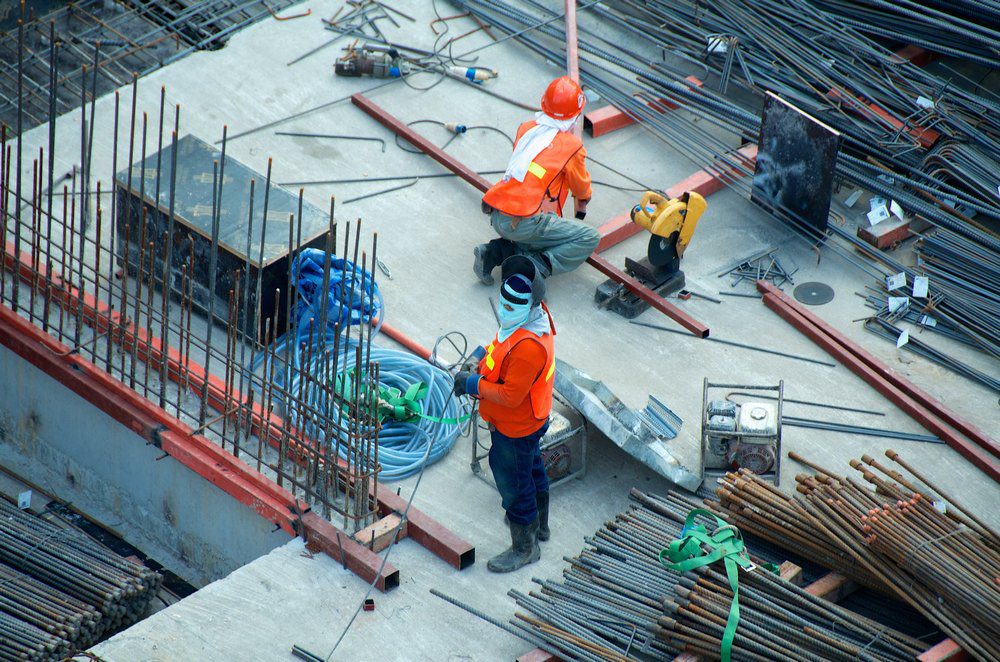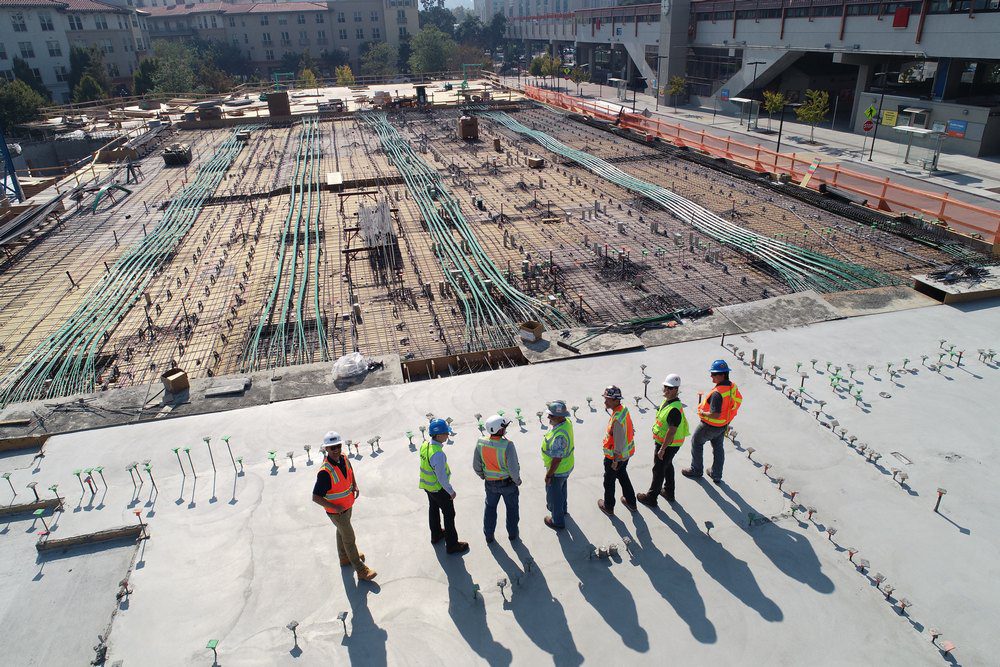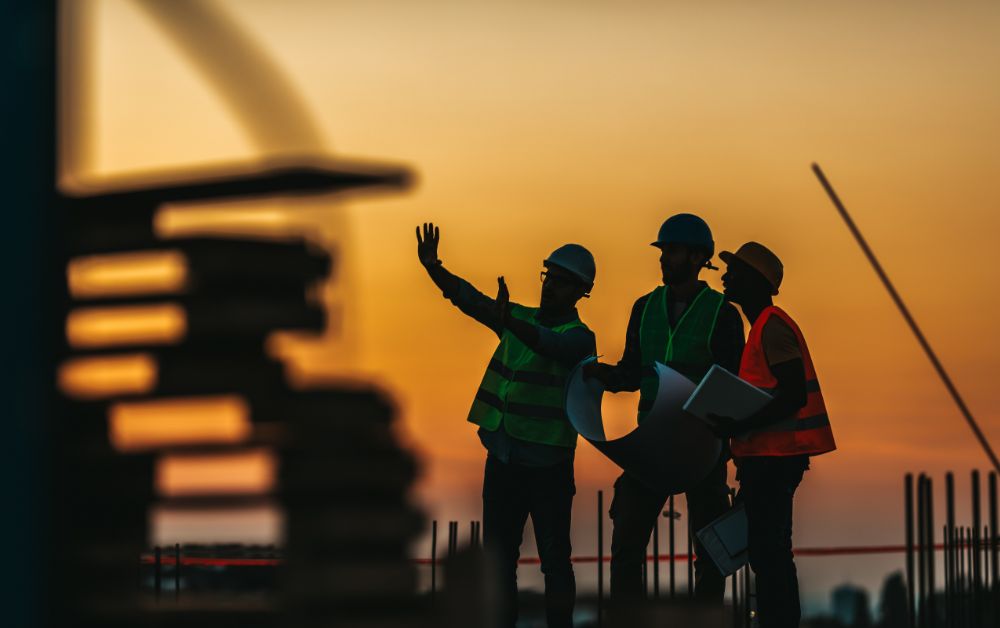Last Updated on July 10, 2025 by teamobn
Construction projects involve a lot of risks, from safety hazards to cost overruns and scheduling errors. Identifying these risks ahead of time allows you to be prepared when they arise. If not mitigated, these risks can be detrimental to your construction projects, severely affecting your bottom line.
Construction risk management is vital for the success of any construction project. If you lack the necessary expertise, you might consider partnering with a reputable construction control company. This will help you develop and implement a solid risk management plan that will keep your project running smoothly, safely, on budget, and within schedule.
An effective construction risk management plan should include detailed yet easy-to-follow processes to help you define the various risks and prevent or reduce their likelihood. It should also help you to make better decisions on how to best mitigate the effects of potential risks and avoid them in the future. Here are the benefits of having a risk management plan for your construction project:
Advantages of a Construction Risk Management Plan
1. Increased Operational Efficiency
Creating and successfully implementing an effective construction risk management plan helps ensure you’re always prepared with the necessary resources to deal with a problem when it arises. Equipped with a risk management plan, you can effectively plan for the various potential risks, allowing you to respond faster and competently and mitigate their effects. This saves money, time, and physical resources, allowing you to spend more time and resources on value-added tasks than constantly dealing with hazards.
Effective implementation of a risk management plan on several of your construction projects makes it easier for you and your employees to assess future projects. That’s because you’ll be better equipped with the tools and knowledge required to make data-driven decisions and avoid risks. This leads to improved efficiency and consistency of your construction operations. You’ll also have the necessary tools to meet your project’s budget and achieve your construction milestones.
2. Gain Confidence in Your Projects
Another benefit of having a sound construction risk management plan is it lets you gain confidence in your projects. Once you identify and access your potential risks, develop a budget for mitigating them, and have a comprehensive response plan to avoid or mitigate them, you increase your chances of finishing the project successfully.
Since a plan is reusable, you can take advantage of every opportunity to capitalize on your company’s strengths. This enables you to assess your projects’ success and build the best risk management practices for your future projects, saving time and resources in your construction projects.
3. Improved Safety
Construction is inarguably one of the most dangerous industries. That’s because construction workers are exposed to many risks and hazards on site that could cause health complications, injuries, or even death. In fact, about 20% of worker fatalities in the US are in construction, but most of these fatalities can be avoided.
A risk management plan helps you identify and avoid potential risks, hazards, or disasters before they happen and compromise your workers’ safety while working on construction sites. This ensures you create a safe and secure environment for your workers and reduce the likelihood of a safety hazard on the construction site. This not only reduces the number of injuries in the workplace but also reduces the threat of litigation and legal liability.
Without a clearly-defined risk management plan to ensure the safety of your construction sites, injuries, and fatalities are more likely to happen, leading to costly delays and lawsuits. Partnering with a trusted and experienced construction control company can help you create a detailed risk management plan, helping you avoid the risk of spending hefty amounts of money on legal and internal expenses and keep your projects moving on the right track.
4. Increased Profits
Construction projects often face numerous risks due to unanticipated events. This includes damage to property, natural disasters, fires, overlooked design omissions, theft of materials, injuries, and deaths, erroneous quantity surveying, and many more. If not managed, these risks can lead to drastic schedule delays and additional expenses, costing your company thousands of dollars or even causing you to close your business.
With a detailed and well-thought-out construction risk management plan, you can adequately plan for potential risks and unexpected events that could disrupt your operations and lead to additional expenses. While no risk management plan can protect your company completely against disasters, having a carefully-crafted plan in place can increase your likelihood of achieving long-term profitability.
Your risk management plan can help minimize extra costs and increase revenue from your construction projects in different ways. Through risk assessment, you can identify potential problems that could cause major issues. Using the risk assessment findings, you can develop control measures and plans to improve workplace safety, reduce the likelihood of accidents and fatalities and protect your financial resources.
A plan can also boost your company’s profits by reducing or preventing non-compliance issues that could lead to costly penalties, fines, and lawsuits. Providing employees with a safe and secure working environment can show them that you care about their safety and well-being, boosting their morale and productivity. This motivates them to work more effectively and efficiently, helping you meet your project timelines without incurring extra costs.
5. New Business Opportunities
Regulators and potential investors often consider litigation and other types of risks a business liability. Having a good risk management plan enables you to prevent and mitigate potential risks upfront, making your construction company a more attractive investment to investors. A carefully-crafted plan ensures you successfully complete projects, building your company’s reputation and attracting more clients. This increases your company’s overall revenue.
6. Elevates Communication among Shareholders
Effective construction risk management demands a high level of communication and collaboration between all involved parties. Ensuring everyone is on the same page regarding the project’s progress and working together can enable you to identify and manage construction risks before they develop into a problem. A carefully-crafted risk management plan can help you to assess those risks and develop appropriate measures to mitigate them.
Identifying Common Risks in Construction Projects
Every building project, regardless of size or budget, runs several hazards. These hazards could halt a project entirely, increase expenses, or delay progress. Understanding and spotting these hazards early on starts a good construction risk management strategy. Knowing what difficulties may arise helps you better prepare for them and maintain the project’s course.
Safety Hazards
Construction sites are rife with possible safety hazards. Workers contend with erratic weather, dangerous chemicals, high work areas, and heavy machinery. Serious injuries or even deaths can follow slips, falls, mechanical mishaps, and hazardous substance exposure.
These events not only endanger workers’ lives but also hinder development and increase insurance prices. Any construction risk management strategy depends on early identification of safety risks and development of thorough safety procedures.
Financial Risks
Often, money is one of the most sensitive aspects of any building endeavor. A project’s financial health might be devastated by unanticipated costs, erroneous cost projections, customer late payments, or material price rises. Improper planning could lead a business to skip building entirely or cut costs.
Careful budgeting and contingency planning help to accurately identify and track financial risks. Including sound financial policies in your construction risk management strategy helps to maintain reasonable budgets and project funding till completion.
Design Errors and Omissions
Even small mistakes in the design phase can snowball into massive problems once construction begins. Missing dimensions, structural miscalculations, or overlooked details lead to costly redesigns, wasted materials, and delays. Errors at this stage often require rework that can set a project back weeks or months.
A careful review process, regular communication with architects and engineers, and thorough documentation help catch mistakes before they turn into expensive corrections. Addressing design risks is an essential part of a reliable construction risk management plan.
Scheduling Delays
Exact timing is essential for construction projects. A project timetable can be thrown off by poor weather, labor shortages, supply chain interruptions, and permit delays. Once a delay happens, it often sets off a domino effect affecting final handovers, inspections, and subcontractors. Early identification of possible schedule hazards helps project managers to create flexibility and create backup plans for important activities.
Environmental and Regulatory Risks
Projects have to follow labor norms, zoning restrictions, and environmental rules. Not obtaining the appropriate permissions or breaking laws could result in penalties, stop-work orders, and court fights.
Environmental factors such as flooding, unstable soil, or protected wildlife habitats can also ruin a project if not adequately managed. Including a thorough legal and environmental study in your construction risk management strategy helps to avoid expensive errors and safeguard the reputation of the project.
Every building project has risk; but, it does not have to imply failure. Taking the time to find the most frequent hazards and include them into your construction risk management strategy will help you to address issues before they spiral out of control. Your projects have a better chance of finishing safely, on time, and under budget with good planning and awareness.
Key Components of an Effective Construction Risk Management Plan
A construction risk management plan goes beyond a checklist. It is a methodical approach that identifies potential hazards and explains how to mitigate their impact. A solid strategy should be clear, realistic, and adaptable throughout the project. Understanding the essential elements that enable a construction risk management plan to be effective will help you safeguard your reputation, schedule, and finances.
Risk Identification
Any construction risk management strategy begins with identifying all conceivable risks. This calls for considering beyond clear safety concerns. Design mistakes, environmental concerns, financial problems, and timetable conflicts all have to be taken into account. Holding brainstorming meetings with key stakeholders helps identify concealed hazards that might otherwise go unnoticed. At this point, every risk, no matter how little, should be recorded.
Risk Analysis
Once the risks have been identified, the next stage is to examine their potential impact. Not all risks are equally important. Some might cause minor delays; others could jeopardize the entire enterprise. Often, risk analysis entails judging likelihood and severity to rate risks. This enables to give priority to which dangers require quick action and which may be tracked gradually.
Risk Response Planning
Once risks have been analyzed, a construction risk management plan must lay out specific responses. This could involve avoiding the risk, mitigating its effects, transferring it to another party like an insurance company, or simply accepting it if the impact is minor. Response strategies should be detailed enough that project managers know exactly what steps to take when a risk event occurs.
Monitoring and Review
A construction risk management plan must remain active throughout the project. New risks can appear at any time. Regular risk reviews keep the plan current and ensure that new threats are quickly addressed. Monitoring involves updating the plan as projects progress, tracking how well mitigation strategies are working, and adjusting when necessary.
Communication and Documentation
Clear communication is essential for a risk management plan to succeed. Everyone involved must understand the plan, their role in it, and how to report emerging risks. Good documentation also ensures that lessons learned from one project can strengthen future ones. A well-documented construction risk management plan creates a culture of accountability and preparedness within the organization.
Endnote
Each construction project comes with its own set of problems and opportunities. The worst thing about not dealing with these challenges upfront is that they can cause drastic delays in project delivery and additional expenses, which could hurt your company’s overall revenue and reputation. An effective risk management strategy can allow you to easily identify potential risks, assess them, and prevent them from happening.
Effectively managing your construction project’s risks can streamline your company’s operations, lower your project’s costs, enhance workplace safety, and become more confident in the success of your projects. This ensures you enjoy more financial savings, greater employee productivity, better decision-making, and increased chances of success in your future construction projects.






